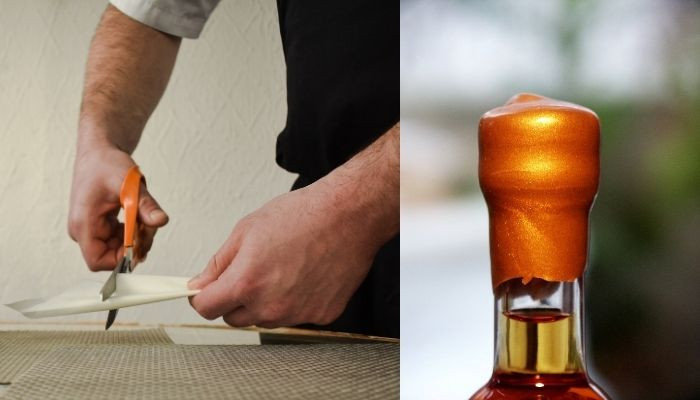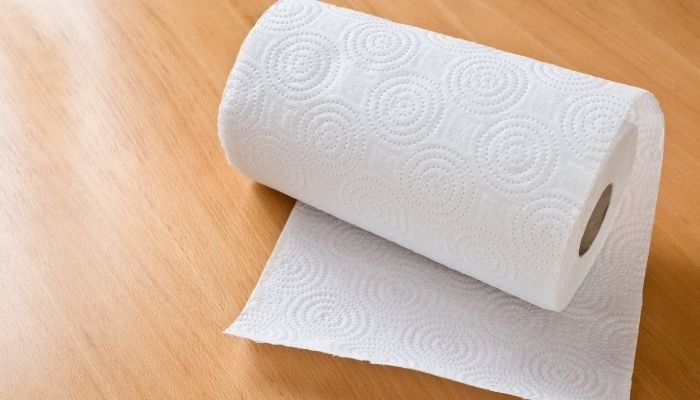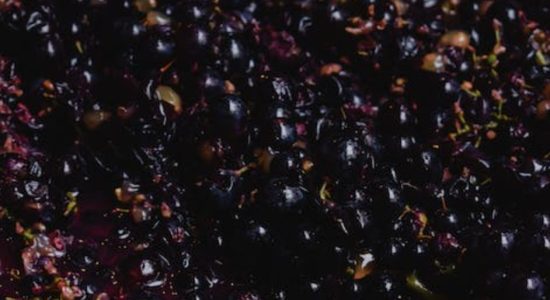How to Recork Wine Like a Sommelier

Wine gets better with time—but only when it’s not opened. That’s why you’ll need to know how to recork wine if you don’t plan on drinking the entire bottle at once. As I found out the hard way many years ago, wine can go south quite quickly if the proper storage methods aren’t used.
Wondering how to recork wine? The easiest way is to put the stopper back in if it remains undamaged after the opening process. Other tools, such as paper towels and rubber stoppers can be used to provide alternative fixes.
In this guide, I’ll tell you exactly how to recork your wine so that you can enjoy longer-lasting flavor.
Keep reading to find out more!
Can You Put a Cork Back into a Wine Bottle?
If you still have your original cork and it’s not damaged (by which I mean there’s no end-to-end hole in the cork from where you removed it), you can most definitely put your cork back into your wine bottle. It’s never recommended to put a damaged cork back into a wine bottle for the simple reason that it allows oxygen to enter into your wine and damages its flavor.
How to recork your wine in 4 steps:
Fortunately, it’s quite simple to recork your wine if you have a viable cork. Make sure to follow these simple steps in order to get the most out of your wine:
- Steady the Bottle—The recorking process takes a bit of pressure, so you want to make sure the bottle is steady and on a flat surface before you try.
- Find the Right Angle—Additionally, you’ll want to find the right angle to make sure the cork goes in properly and airtight. The best way to do this is to put it so that part of the cork is inside the bottle and the rest of it is leaning against the lip of the bottle.
- Press Down on the Cork—From here, you’ll want to press down on the cork, making sure to twist it as you do.
- Push the Cork—Once you’ve got the cork inside, push it so that it is resting about halfway down the bottle.

What Can I Use to Recork a Wine Bottle?
If you’re finding the above method difficult, there are some materials you can use to get your wine recorked more easily.
Let’s take a look at a couple of them:
– Wax paper
Have any wax paper lying about? This unsuspecting material could help you get a stubborn cork back into a wine bottle. To do this method, wrap one end of the cork with a piece of wax paper, making sure none of it overlaps.
After placing the wine bottle on a steady surface, center the wrapped cork over the opening of the wine bottle and gently push down on it, making sure to rock slightly. Unlike the above method, it’s crucial that you don’t twist the cork here, as it could cause the paper to crinkle or rip. As always, however, you’ll want to make sure that the cork goes about halfway down into the bottle.

– Paper Towels
Is your cork too far gone to protect your wine? If so, you may have to go with a temporary fix until you can find another one. While the paper towel method isn’t good for long-term storage, it will help you keep your wine fresh for longer.
To do this method, make sure to follow these steps:
- Fold a Paper Towel—Taking one sheet of a paper towel, fold it so that it’s about two inches in width.
- Roll It into a Cork Shape—Once it is folded, start rolling it on the shorter side until it takes on a cork shape. The final product should be only a little bit bigger than the opening of the wine bottle. Trim if necessary and then tape it together so that it holds its shape.
- Cover and Tape—After covering your makeshift cork with a piece of plastic wrap, tape the “cork” again.
- Press and Twist—Place your cork over the center of the opening, pressing and twisting until it is inside decently well. Then, push down until it is halfway into the bottle.
This fix should help you keep your wine from going bad overnight, but you’ll ultimately need a cork or other official stopper if you want to store it and keep it fresh for as long as possible.

How Do You Reseal a Wine Bottle without a Cork?
Of course, there also exist some more official ways to reseal your wine bottle without a cork. Let’s take a look at some effective methods that help protect your wine from oxidation and tasting fresh for as long as possible:
– The Rubber Stopper Method
It’s almost an exaggeration to call this a “method,” as rubber stoppers are the simplest way to keep your wine fresh and stored. If your cork is damaged, consider purchasing a rubber stopper that fits your size wine bottle. These stoppers help block air and come in a variety of colors to help keep your wine fresh and your bottles stylish.
– Vacuum Pump Method
While a simple rubber stopper can get the job done, they work even better if they have vacuum pump capabilities. Some rubber stoppers boast this feature, enabling you to vacuum air out of your bottle using a manual (and reusable) pump. These pumps help remove deadly oxygen from your bottle to maximize the shelf life of your wine.
– Inert Gas Wine Preserver Method
If you have the funds for a more hi-tech (and thus more reliable) method of wine preservation, consider purchasing an inert gas wine preserver. This tool will fill empty space in your wine bottle with argon gas, a substance that will help oxygen from entering the bottle. Interestingly, this option allows you to simply pierce the cork so that you never officially have to uncork it.
With this method, the preserver is first fastened onto the bottle, where its needle can be used to pierce the cork. Gas-containing capsules attached to the device will help refill the empty space in the bottle as soon as you pour it. This means you can get the most out of your wine every time, as you minimize the degree of oxidation that your wine experiences.
– The Transfer Method
You may also consider transferring your wine to a small bottle in order to preserve its freshness. Because larger surface area correlates to higher levels of oxidation, having your wine in a smaller bottle means that the product will ultimately last longer. This means you should consider buying half-bottles for your wine.
Even though this may be more expensive at first, you can reuse the bottles once you’ve finished them so that you can transfer wine from a bigger bottle into them for more long-term storage. Once transferred, you can use the methods above to cork the bottles and keep them fresher for longer.

How Do You Shrink a Cork in a Wine Bottle?
Once a cork has been removed from a wine bottle, it begins to expand. If you’ve found that your cork is too big to fit inside your wine bottle and are looking to get it back in, you may consider shrinking it. Rather than simply cutting your cork (which is often more trouble than it’s worth), consider steaming it instead. Steaming a cork can help make it softer and spongier, and therefore easier to put back into a bottle.
To shrink a cork by steaming, follow these steps:
- Boil Water—Boil some water on the stove, making sure to use a pot with a lid.
- Steam the Cork—Once you’ve got water boiling, turn the heat off and place your cork inside. Cover with the lid and let the cork steam between two and five minutes. Your cork will soften up a lot during this time period. Make sure not to steam for longer, as this can make it brittle and unfit for use.
- Cool It Down—Gently remove the cork and pour cold water over the top. You want your cork to return to room temperature before putting it back in the bottle.
By following these steps, you can make your cork malleable (and therefore shrinkable) and easier to put in your wine bottle. You may need to use a temporary fix like the one described above in order to preserve the freshness of your wine while you shrink your cork.
Conclusion
If you’ve ever tried to get a cork back into a wine bottle, you already know how difficult the process can be. Fortunately, there are ways to make the situation easier, from wrapping your cork to using different materials entirely. Perhaps you’ve got a stubborn wine cork now that you can’t get back into the bottle—or maybe your cork is gone entirely.
Whatever your situation, make sure to use this guide on how to recork wine to reseal your bottle and store it properly. This will help you get the best ROI (and the most flavor) out of your purchase!







